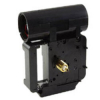Clock Parts Movements Profile


Clock movements are the engines, or electric motors, that control the turning and also positioning of the hands for appropriate time telling. Clock movements were commonly mechanical and also analog, but in modern times they are nearly exclusively digital, and either analog or electronic. Regardless, the feature required boils down to the size of the angle subtended by each hand at every minute.
Clock movements are typically described as motors, and the terms are virtually compatible. The force behind a mechanical one was either a coiled springtime or a hanging weight causing a flywheel to turn. To avoid "independent," or runaway turning, pendulums and also escapement mechanisms were utilized, developing an oscillation that had actually a particularly derived frequency.